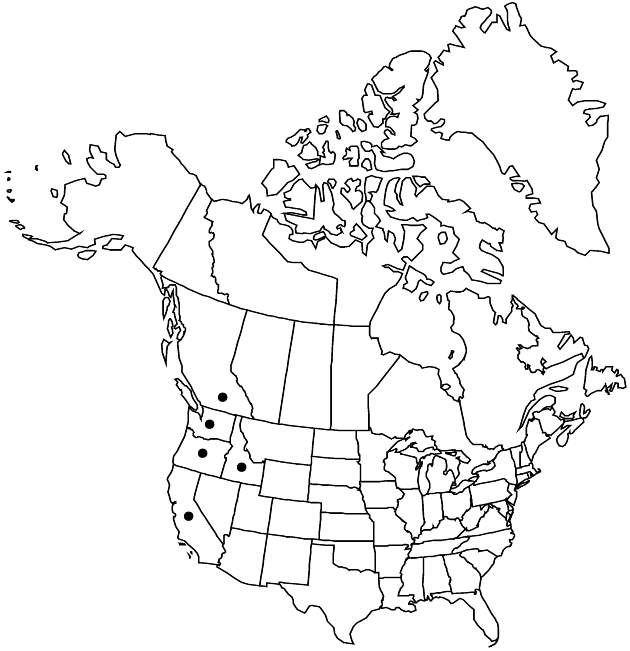Difference between revisions of "Psilocarphus tenellus"
Trans. Amer. Philos. Soc., n. s. 7: 341. 1840.
FNA>Volume Importer |
imported>Volume Importer |
||
| (2 intermediate revisions by 2 users not shown) | |||
| Line 47: | Line 47: | ||
|publication year=1840 | |publication year=1840 | ||
|special status= | |special status= | ||
| − | |source xml=https:// | + | |source xml=https://bitbucket.org/aafc-mbb/fna-data-curation/src/2e0870ddd59836b60bcf96646a41e87ea5a5943a/coarse_grained_fna_xml/V19-20-21/V19_764.xml |
|tribe=Asteraceae tribe Gnaphalieae | |tribe=Asteraceae tribe Gnaphalieae | ||
|genus=Psilocarphus | |genus=Psilocarphus | ||
Latest revision as of 19:55, 5 November 2020
Plants greenish to grayish, arachnoid to ± sericeous. Stems (1–)2–10, ascending to ± prostrate; proximal internode lengths mostly 1–2(–3) times leaf lengths. Capitular leaves ± spreading, mostly not appressed to heads, spatulate to obovate, widest in distal 1/3, longest 6–15 mm, lengths mostly 2–5 times widths, 1.5–2.5(–3) times head heights. Heads ± spheric, largest 3–5.5 mm. Receptacles unlobed. Pistillate paleae individually visible through indument, longest mostly 1.5–2.7 mm. Staminate corollas 0.8–1.5 mm, lobes mostly 5. Cypselae narrowly obovoid, somewhat compressed, 0.7–1.2 mm.
Phenology: Flowering and fruiting late Mar–early Aug.
Habitat: Dry or seasonally moist, barren to wooded slopes, flats, often disturbed sites (foot paths, road beds, burns), sometimes near vernal pools toward s
Elevation: 0–2100 m
Distribution

B.C., Calif., Idaho, Oreg., Wash., Mexico (Baja California).
Discussion
Psilocarphus tenellus is relatively common in the Californian Floristic Province from northwestern Baja California to southwestern Oregon; northward it is scattered to northern Idaho and Vancouver Island, British Columbia. It has been of conservation concern in Canada (J. M. Illingworth and G. W. Douglas 1994b).
Selected References
None.